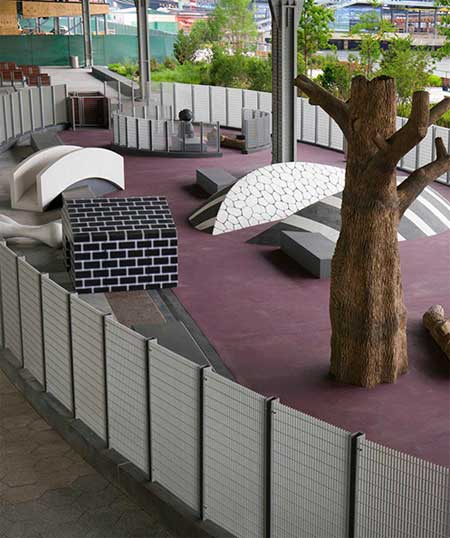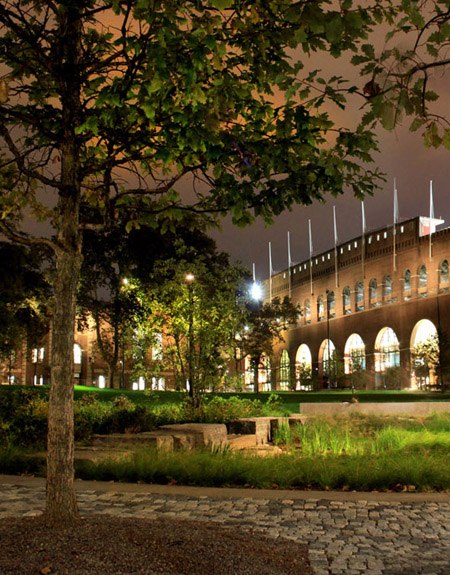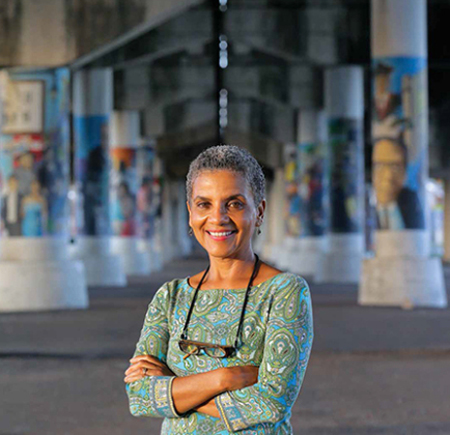THE NEW LANDSCAPE DECLARATION: PERSPECTIVE AND CRITIQUE (PART 1)

After hearing 23 declarations on the first day of the Landscape Architecture Foundation (LAF)‘s New Landscape Declaration: Summit on Landscape Architecture and the Future, panels of landscape architects on day two critiqued the declarations, delved into some of the important facets of landscape architecture — aesthetics, ecology, society, and innovation — and offered visions for what needs to be achieved over the next 50 years.
Aesthetics: Connect Through Creativity
The panel, which was led by Adam Greenspan, ASLA, a member of the LAF board of directors, essentially worried that the importance of “physical design, which engages culture and nature,” may be lost in the total quest for sustainability and restoring ecosystems. Their response was designed landscapes must be beautiful if we expect communities to love them and take care of them far into the future.
Claude Cormier, ASLA, principal of Claude Cormier + Associates, said aesthetics has always played a central role in landscape architecture. Frederick Law Olmsted was “focused on nature as an aesthetic experience.” For Mikyoung Kim, FASLA, Mikyoung Kim Design, it’s less about aesthetics, a term she dislikes, and more about the “process of creativity, which is methodical and conscious, and about tapping intuition, which occurs on a subconscious level.” But she cautioned that if landscape architects were “too creative, they risk missing the pressing global issues.”
In the context of the overall summit, this seemed like a shocking statement: “We can’t save the world, but we can address some major issues through design in contemporary ways,” argued Chris Reed, ASLA, founder of Stoss. “Design can move people’s hearts to create action.” Ken Smith, FASLA, principal of Ken Smith Workshop, largely concurred, arguing that “aesthetics matter. The qualitative aspects — the spaces, programs, forms — provide meaning to humans. Landscapes can delight, confound, confuse, excite us.” He pointed to the art world, where the “new is often ugly,” arguing that perhaps landscape architects also need to be pushing the boundaries on concepts of beauty. Meanwhile, Maria Goula, associate professor at Cornell University, asked: “do we need new aesthetics or perhaps multiple aesthetics?”

Ecology: Make Ecological Design Mainstream
“People will look at us and this time and say we just didn’t get it,” said Kristina Hill, Affiliate ASLA, professor at University of California, Berkeley, referring to the many dangers facing our ecosystems and planet. Hill, who moderated the ecology panel, relayed how San Francisco’s city government momentarily fell into crisis when a senior official at the National Oceanic and Atmospheric Administration (NOAA) stated they expected a 6-9 feet sea level rise by 2050. While it was just one official’s personal opinion, San Francisco’s panicked response showed that “stronger sense of urgency is needed” in the push to adapt our ecosystems to the coming environmental changes. “Unprecedented instability is coming. The role of landscape architects is to think out the options and try not to panic.”
Ellen Neises, ASLA, an adjunct professor at University of Pennsylvania, said in this age of crisis, we need to move away from “sustainability propaganda in which ‘optimism sells.’” Instead, “designers need to provoke more.” Jose Alminana, FASLA, a principal at Andropogon Associates and major force behind the Sustainable Sites Initiative (SITES), rued that ecology is “still not mainstream in our profession.” He called for landscape architecture educators to “embed scientific rigor in the educational process,” and landscape architects to do the same in their design process. “Beauty and performance aren’t mutually exclusive. All forms of life matter.”

Brett Milligan, ASLA, University of California, Davis, argued that “if we do things to the landscape, they sometimes respond in some ways we dislike. We need a new, relational way to interact with the landscape.” Julie Bargmann, founding principal, D.I.R.T. Studio, urged caution against becoming too all-knowing about nature, arguing that “ecological models are slippery.” And Antje Stokman, International ASLA, professor at the University of Stuttgart, called for creating methods to encourage “direct community engagement with the environment,” particularly in environments characterized by heavy migration among both human and other species.
Society: Diversify and Co-design with Communities
Deb Guenther, FASLA, partner at Mithun, led a discussion that focused on the twinned goals of increasing diversity in the landscape architecture profession and better reaching under-served communities. Diane Jones Allen, ASLA, principal at DesignJones, pointed to ASLA’s ongoing efforts to increase diversity through its annual diversity summit, which brings together emerging African American and Latino landscape architects, but also called it like she saw it: “if we truly want diversity, we need to focus less on statistics and instead recognize and praise diversity and lift it up.” She pointed to the range of African American landscape architects doing important work, often under the radar. Jeffrey Hou, ASLA, professor at University of Washington, added that “landscape architects need to diversify their ranks or risk becoming a profession of colonialists,” coming in as white experts into communities of color.

“Landscape architecture can diversify in the next decade or two,” because just look at the huge gains that have been made to bring in more women over the past 50 years, argued Anne Whiston Spirn, FASLA, a professor at MIT. She explained her multiple decades of experience helping African American communities in Philadelphia unearth their own landscapes, explaining how “long-term commitments are needed to build trust.” She wondered whether landscape architecture programs, with their semester-long field projects, can truly engage and learn from communities in which they dip for a short time. Jones Allen concurred, arguing that “we have to be careful how we get students into these communities, but it’s important to get them out of their comfort zone of the studio and face real people with real issues. Students are learning.” Allison Hirsch, ASLA, an assistant professor at the University of Southern California, was less positive, arguing that “landscape architects tend to avoid issues of inclusion; there are few community-oriented design practices.”
For Spirn and others, the solution is more equitable design processes rooted in co-design and a participatory process with stakeholders. The goal should be capacity building among communities. “Make the design process transparent, not opaque,” argued Spirn.
Innovation: Move Beyond the Discipline
Adrian McGregor, Internatonal ASLA, a founder of McGregor Coxall in Australia, envisions a “new economy that trades in carbon, which will raise underlying values of ecosystems,” eventually resulting in a new “NASDAQ for the environment.” The growing importance of sequestering carbon in the environment will “put landscape architects at the table.”
Andrea Hansen, founder of Fluxscape, wants landscape architects to “move beyond the discipline, embrace holistic thinking,” and embrace open data. But she added that increasing innovation doesn’t necessarily mean “increasing complexity; we must keep it simple when we communicate to expand our reach.” To realize this reach beyond the discipline, Marcel Wilson, ASLA, founder of Bionic, called for more experimentation and risks, even if they result in failures. “We must incentivize innovation; landscape architects have become too reactive.”
Liat Margolis, ASLA, director of the Green Roof Innovation Testing Laboratory (GRIT Lab), University of Toronto, appears to be doing what Wilson called and Hansen have called for, as she works to create the next generation of green roof technologies. “We need to discover different material composites, bridge performance gaps, and exceed current green design benchmarks through experimental design.”

And Karen M’Closley, ASLA, an associate professor at the University of Pennsylvania, similarly called for a “new set of sustainable design indicators, set-up pre-occupancy and post-occupancy surveys, and capture results in real-time.” Margolis finally asked: “where is the landscape architecture field’s think tank?”







Excellent discussion, -and multiple perspectives. Basis for positioning in the profession, accepting responsibility and taking action.